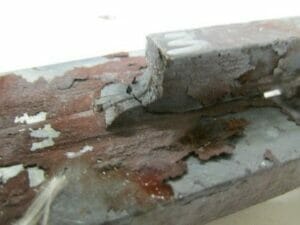On 31 January, Dr Andrew Moncrieff spoke (virtually) to 42 members of the AIS about arson, and techniques that Hawkins use to determine whether a fire was set deliberately or not.
This webinar covered the typical signs of arson that forensic engineers look out for when investigating fires. Dr Moncrieff also talked about the importance of a thorough scene examination and the dangers of misinterpreting patterns of fire damage. His presentation provided a great example of a fire scene that looked as if it were the result of multiple fires being set in different areas of a kitchen, but was actually caused by the accidental ignition of a clothes drying rack by a discarded cigarette in a nearby bin.
With the drying rack removed from the scene after the fire was extinguished, it looked like there were 3 seats of fire (i.e. multiple points where a fire has started, which usually means arson). However, when the drying rack was repositioned in the kitchen, it was clear that it linked the three different seats of fire, and the patterns were the result of fire spread, not deliberate separate ignition sites.
The lessons here were to:
- Carry out a thorough scene examination, even in areas that do not appear to be damaged or connected to the fire
- Always consider fire spread and patterns of damage carefully
The absence of an ignition source does not automatically mean that a fire was started deliberately. Lastly, Dr Moncrieff talked about delayed ignition devices and some of the more inventive ones he has found during his investigations.
Hawkins would like to thank the AIS for inviting Dr Moncrieff to speak to them. If you are a member and would like to hear more about our work, Richard Heath will be giving a webinar on lithium ion batteries for the AIS in April. If you would like a fire investigator (or a Hawkins expert from any other discipline) to speak to your organisation, please contact us.







